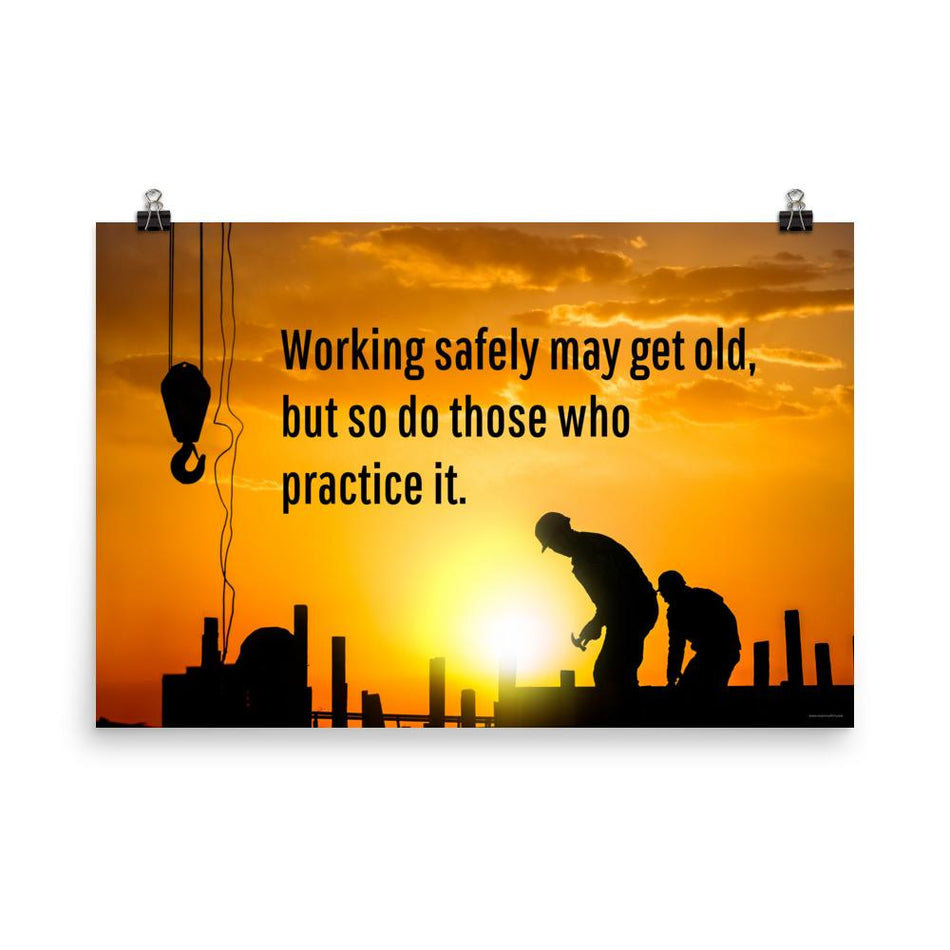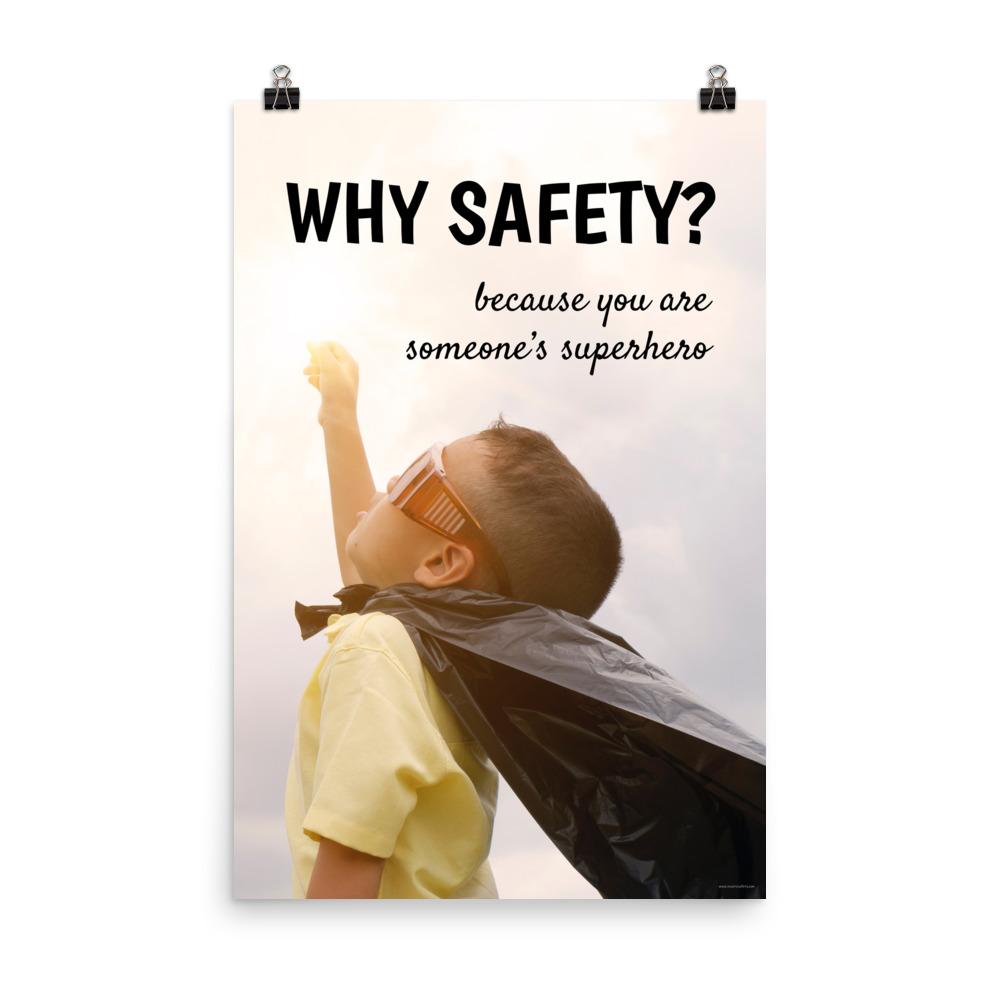Spending most of our day at work—about eight to ten hours—is a significant part of life. Regardless of the type of job you have, feeling safe in the workplace is essential. A company that values its employees ensures their safety.
When staff know they’re in a safe environment, they wake up feeling energized and motivated. They're ready to give their best effort. Organizations also have legal responsibilities to meet certain safety standards.
If employees don’t feel secure, it can have a far-reaching impact on the business:
- Performance: Employees won’t reach their full potential.
- Productivity: Production rates drop, and innovation is stifled.
- Company reputation: A negative image can damage the organization’s credibility.
- Turnover: Low morale leads to high staff turnover.
- Absenteeism: Employees are more likely to take time off.
- Loyalty: Employees become disengaged.
- Costs: Increased insurance premiums and other costs can arise.
But this doesn’t have to be your company’s story. Here are five crucial ways to create a safer work environment.
1. Provide Safety Training Programs
Workplace safety isn’t just the employer’s responsibility—employees also play a crucial role.
Education is key. As Nelson Mandela said, “Education is the most powerful weapon which you can use to change the world.” Unfortunately, many employees assume accidents only happen elsewhere and become complacent until an incident occurs.
Begin with general safety training for all staff, covering potential workplace hazards and how to protect themselves. Then, offer specialized training for those handling specific equipment.
Don’t stop there—make training an ongoing process. As technology, regulations, and employees evolve, so should your safety programs. Regular training opportunities should be provided in these instances:
- Hiring new staff
- Offering refresher courses for existing staff
- Changing management or introducing new equipment
- Assigning employees new roles
- After long leaves of absence
- When retraining becomes necessary
In addition to training, provide staff with a comprehensive safety and emergency manual. Regular safety meetings encourage open dialogue and help keep safety top of mind.
Interactive, peer-to-peer learning can also be effective. Role-playing scenarios and giving employees responsibilities during training fosters engagement and helps create a culture of safety.
2. Eliminate Potential Hazards
A company serious about safety ensures that employees have the right tools and protective gear. But beyond that, it actively works to remove potential hazards.
Start by identifying risks through a job hazard analysis, which helps anticipate risks before they lead to accidents. Review injury reports and near misses to spot patterns that may reveal hidden dangers.
Once hazards are identified, prioritize them by their likelihood of causing serious harm and the timeline for fixing them. Then, create an action plan to address each issue.
3. Conduct Regular Inspections
Regular inspections are a must, and this task should involve more than just management. Invite experts to conduct periodic inspections and involve staff in daily checks. Employees should inspect equipment and workwear before starting their shifts, with random inspections to ensure procedures are followed.
Keep employees informed by sharing injury statistics and other safety-related data on a monthly basis. This constant awareness helps maintain a focus on safety.
Establish a clear reporting system for issues, ensuring that machines and equipment are repaired quickly and employees' concerns are addressed promptly.
4. Lead by Example
Safety starts at the top, and leadership’s commitment is crucial. When management is visibly involved in safety initiatives, it sends a strong message to the entire organization.
For example, management should be the ones to announce safety training sessions, making them a priority. When the company emphasizes that attendance is mandatory—especially if management participates—employees will take safety more seriously.
Leadership should also provide the necessary resources and time to maintain a safe work environment. Recognize and reward employees who uphold safety standards, using them as role models to inspire others.
5. Provide Proper Safety Gear and Workwear
The right workwear and safety gear are critical components of workplace safety. Personal protective equipment (PPE) helps safeguard employees during their daily tasks.
Safety gear protects essential areas such as hands, feet, head, and face, preventing injuries from airborne particles, sharp objects, or machinery. However, it’s important that protective clothing fits properly, as ill-fitting gear can create new risks.
Keep in mind that different employees may have unique needs—don’t rely on a one-size-fits-all approach to uniforms. Instead, invest in high-quality, properly sized protective gear. Consider working with a rental service that maintains uniforms to ensure they remain in top condition.
A safe workplace is essential for both employee well-being and organizational success. When safety becomes a priority, employees are more engaged, productive, and loyal. They wake up motivated, knowing they can focus on their tasks without unnecessary risk. However, creating a safe environment requires a proactive approach from both management and employees.
By implementing these strategies, companies not only protect their employees but also safeguard their own future. A focus on safety reduces costs related to injuries, absenteeism, and turnover while enhancing the organization’s reputation. Ultimately, safety isn't just a legal obligation—it's an investment in your people and your business. A secure and supportive work environment leads to a healthier, happier, and more productive workforce.











